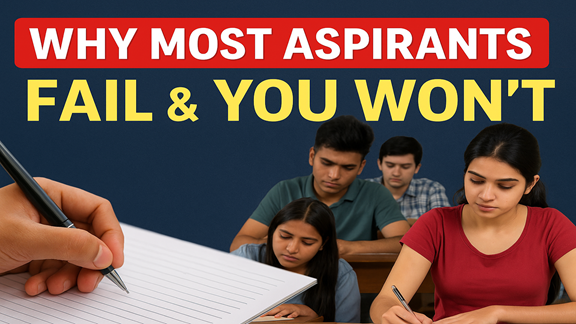Social Influence
Social Influence
Social Influence refers to the ways in which individuals change their behaviour, attitudes, or beliefs in response to the real or imagined presence of others. It encompasses a broad range of phenomena, including conformity, compliance, obedience, persuasion, and group dynamics. Social influence is a powerful force that shapes behaviour in both subtle and overt ways, impacting decisions, actions, and interactions in various contexts.
Types of Social Influence
- Conformity: Adjusting one’s behaviour or beliefs to match those of others, often in response to real or imagined group pressure.
- Compliance: Changing one’s behaviour in response to a direct request from another person, typically someone in a position of authority or influence.
- Obedience: Following direct orders or commands from an authority figure.
- Persuasion: The process of changing someone’s beliefs, attitudes, or behaviours through the use of arguments, reasoning, or appeals.
- Group Dynamics: The influence of group interactions on individual behaviour and decision-making.
Examples of Social Influence
Conformity
Example 1: The Asch Conformity Experiments (graphic for this)
- Scenario: In a series of experiments conducted by Solomon Asch, participants were asked to match the length of a line on one card to one of three lines on another card. Each participant was placed in a group with actors who intentionally gave incorrect answers.
- Outcome: Despite the clear evidence, many participants conformed to the incorrect group consensus, demonstrating the power of conformity.
- The experiments illustrated how individuals often conform to group norms to avoid conflict or the feeling of being an outsider.
Example 2: Fashion Trends
- Scenario: People often adopt new fashion styles and trends to fit in with social groups or to appear fashionable according to societal standards.
- Outcome: This conformity to fashion norms can be seen in the widespread adoption of specific clothing styles, accessories, or hairstyles.
- The desire to belong and be accepted by peers drives conformity in fashion choices.
Compliance
Example 1: The Foot-in-the-Door Technique
- Scenario: A salesperson first asks a potential customer to agree to a small request, such as signing a petition. Later, they follow up with a larger request, such as making a purchase.
- Outcome: The initial compliance with the small request increases the likelihood of compliance with the larger request.
- This technique leverages the principle of consistency, where people are more likely to comply with a larger request after agreeing to a smaller one.
Example 2: Charitable Donations
- Scenario: A charity organization asks individuals to donate a small amount of money. Once individuals agree, the organization follows up with a request for a larger donation.
- Outcome: People are more likely to comply with the larger donation request after having already made a smaller contribution.
- Initial compliance creates a sense of commitment, making people more likely to comply with subsequent requests.
Obedience
Example 1: The Milgram Experiment
- Scenario: Stanley Milgram conducted experiments where participants were instructed by an authority figure to administer electric shocks to another person, who was actually an actor and not receiving real shocks.
- Outcome: Many participants obeyed the authority figure’s instructions, even when they believed they were causing pain to the other person.
- The experiment demonstrated the strong influence of authority on obedience, even in morally questionable situations.
Example 2: Military Orders
- Scenario: Soldiers are trained to follow orders from their superiors without question, even in high-stress or dangerous situations.
- Outcome: This obedience ensures discipline and coordinated action in military operations.
- The hierarchical structure of the military relies on obedience to maintain order and effectiveness.
Persuasion
Example 1: Political Campaigns
- Scenario: Politicians use speeches, advertisements, and debates to persuade voters to support them.
- Outcome: Effective persuasion can sway public opinion and influence election outcomes.
- Persuasion techniques, such as appealing to emotions, using logical arguments, and highlighting endorsements, are used to influence voter behaviour.
Example 2: Advertising
- Scenario: Companies use advertisements to persuade consumers to buy their products. Techniques include testimonials, emotional appeals, and celebrity endorsements.
- Outcome: Persuasive advertising can significantly increase sales and brand loyalty.
- Persuasion in advertising leverages psychological principles to influence consumer behaviour and preferences.
Group Dynamics
Example 1: Groupthink
- Scenario: In a corporate board meeting, a group makes a poor decision because members prioritize consensus and harmony over critical evaluation of alternatives.
- Outcome: The desire for unanimity can lead to suboptimal decisions and failure to consider potential risks.
- Groupthink occurs when the pressure to conform within a group prevents individuals from expressing dissenting opinions or critically analyzing decisions.
Example 2: Social Loafing
- Scenario: In a group project, some members put in less effort, relying on others to carry the workload.
- Outcome: The overall productivity of the group decreases due to unequal contribution from members.
- Social loafing happens when individuals in a group exert less effort than they would if working alone, often due to a diffusion of responsibility.
Social influence is a powerful force that shapes human behaviour in various contexts, from everyday interactions to significant decisions. Understanding the different types of social influence—conformity, compliance, obedience, persuasion, and group dynamics—helps in recognizing how behaviour can be affected by others. By being aware of these influences, individuals can better navigate social situations, make informed decisions, and foster healthier group interactions.
Understanding Persuasion
Persuasion is the process of influencing someone’s beliefs, attitudes, intentions, motivations, or behaviours through communication and reasoning. It involves presenting arguments, information, or appeals in a way that encourages the target audience to adopt a specific viewpoint or take a particular action.
Key Elements of Persuasion
- Credibility: The trustworthiness and expertise of the persuader.
- Emotion: Appeals to the audience’s feelings and values.
- Logic and Reasoning: Use of facts, statistics, and logical arguments to convince the audience.
- Social Proof: Demonstrating that others support or endorse the persuader’s viewpoint.
Examples of Persuasion
- Political Campaigns
Scenario:
- Politicians use speeches, advertisements, and debates to persuade voters to support them.
Example:
- During an election campaign, a candidate might highlight their achievements, present their plans for the future, and appeal to voters’ emotions by sharing personal stories or testimonials from supporters. They may also use statistics to show the effectiveness of their policies.
- By combining credibility (their track record), emotion (personal stories), logic (policy plans), and social proof (testimonials), the candidate aims to persuade voters to elect them.
- Advertising
Scenario:
- Companies use advertisements to persuade consumers to buy their products.
Example:
- A car company runs a commercial showcasing the safety features of their new model, backed by crash test ratings (logic and reasoning). The ad includes endorsements from satisfied customers and a trusted celebrity (credibility and social proof), along with a storyline that evokes feelings of security and happiness (emotion).
- The ad persuades consumers by appealing to their desire for safety, leveraging the credibility of experts and celebrities, and using logical arguments to demonstrate the car’s superiority.
- Public Health Campaigns
Scenario:
- Health organizations use persuasive messages to encourage healthy behaviours.
Example:
- A public health campaign promoting vaccination might include statistics about the effectiveness and safety of vaccines (logic), testimonials from doctors and vaccinated individuals (credibility and social proof), and emotional appeals highlighting the protection of loved ones and the community (emotion).
- By addressing concerns with factual information, leveraging the authority of health professionals, and appealing to emotions, the campaign aims to persuade people to get vaccinated.
- Environmental Advocacy
Scenario:
- Environmental groups use persuasion to promote sustainable practices.
Example:
- An environmental organization runs a campaign to reduce plastic use. They present data on the environmental impact of plastic pollution (logic), share stories of marine life affected by plastic waste (emotion), and showcase businesses and communities that have successfully reduced plastic use (social proof).
- The campaign persuades individuals and businesses to reduce plastic use by combining factual information, emotional stories, and examples of successful initiatives.
- Sales Techniques
Scenario:
- Salespeople use persuasive techniques to convince customers to purchase products or services.
Example:
- A salesperson for a home security system explains the features and benefits of the system using statistics on burglary rates and the effectiveness of the system (logic). They share customer testimonials and endorsements from security experts (credibility and social proof) and appeal to the customer’s desire to protect their family (emotion).
- By using logical arguments, credible endorsements, and emotional appeals, the salesperson persuades the customer to invest in the security system.
- Social Media Influencers
Scenario:
- Influencers use their platforms to persuade followers to adopt certain behaviours, purchase products, or support causes.
Example:
- A fitness influencer promotes a new workout program by demonstrating exercises, sharing their personal success story with the program (credibility and emotion), providing scientific evidence of its effectiveness (logic), and highlighting testimonials from other users (social proof).
- The influencer persuades their followers by combining personal credibility, emotional engagement, logical evidence, and social proof from other users.
Techniques of Persuasion
- Reciprocity:
- People tend to return Favors. Offering something first can increase the likelihood of compliance.
- Example: Free samples in grocery stores encourage customers to buy the product.
- Commitment and Consistency:
- People like to be consistent with what they have previously said or done.
- Example: Signing a small petition increases the likelihood of donating to the cause later.
- Social Proof:
- People look to others to decide how to act.
- Example: Highlighting how many people have already joined a cause or bought a product.
- Authority:
- People follow the lead of credible, knowledgeable experts.
- Example: Using doctors to endorse health products.
- Liking:
- People are more likely to be persuaded by those they like or find attractive.
- Example: Charismatic leaders or celebrities endorsing products.
- Scarcity:
- People are more likely to want something that is in limited supply.
- Example: Limited-time offers or exclusive products.
Persuasion is a powerful tool used in various contexts to influence behaviour and attitudes. Whether through political campaigns, advertising, public health initiatives, environmental advocacy, sales techniques, or social media, effective persuasion combines credibility, emotion, logic, and social proof to achieve its goals. Understanding these principles and examples can help individuals recognize and utilize persuasive techniques effectively in their personal and professional lives.
Areas Where Social Influences and Persuasion Can Be Used by the Indian Government
The Indian government can effectively utilize social influences and persuasion across various domains to achieve policy goals, encourage positive behaviours, and improve public welfare. Here are some key areas where these techniques can be applied:
- Public Health
Objective: Promote healthier behaviours and ensure public health initiatives are adopted by the population.
Examples:
- Vaccination Campaigns: Use persuasive messaging to increase vaccine uptake. Highlighting endorsements from trusted healthcare professionals, sharing success stories, and providing clear, factual information about the benefits and safety of vaccines can encourage more people to get vaccinated.
- Anti-Tobacco Campaigns: Employ graphic warnings on cigarette packs, public service announcements featuring health experts, and testimonials from former smokers to reduce tobacco use.
- Nutrition and Fitness Programs: Launch campaigns promoting balanced diets and regular exercise. Use social proof by featuring popular athletes and influencers who lead healthy lifestyles.
- Education
Objective: Improve educational outcomes and encourage lifelong learning.
Examples:
- School Enrolment Drives: Use community influencers and respected local figures to persuade parents to enrol their children in school, particularly in rural and underserved areas.
- Adult Literacy Programs: Employ social proof by showcasing success stories of adults who have improved their lives through literacy programs.
- STEM Promotion: Highlight the importance of STEM education by featuring successful professionals and scientists from diverse backgrounds, thereby inspiring students to pursue these fields.
- Environmental Conservation
Objective: Promote sustainable practices and environmental awareness.
Examples:
- Cleanliness Drives (Swachh Bharat Abhiyan): Use social influence by featuring local leaders, celebrities, and influencers actively participating in cleanliness drives to inspire public participation.
- Plastic Waste Reduction: Launch campaigns that highlight the environmental impact of plastic pollution, encouraging the use of reusable bags and containers. Use social proof by showcasing communities and businesses that have successfully reduced plastic use.
- Tree Planting Initiatives: Persuade citizens to participate in tree planting by emphasizing the long-term benefits for the environment and featuring endorsements from environmental activists and organizations.
- Financial Inclusion and Literacy
Objective: Enhance financial literacy and inclusion, encouraging better financial habits.
Examples:
- Digital Payments: Promote the use of digital payment platforms by highlighting their convenience and security, using endorsements from trusted financial experts and success stories from users.
- Savings Programs: Encourage saving habits through campaigns that feature testimonials from individuals who have benefited from government savings schemes like Sukanya Samriddhi Yojana.
- Insurance Enrolment: Persuade people to purchase health and life insurance by sharing real-life examples of families who were protected financially due to their insurance coverage.
- Civic Engagement and Governance
Objective: Foster active participation in governance and civic responsibilities.
Examples:
- Voting Drives: Use celebrities and influencers to encourage voter turnout during elections. Highlight the importance of voting through emotional appeals and logical arguments about democratic participation.
- Public Feedback Mechanisms: Promote the use of platforms like MyGov for citizen feedback and engagement by showcasing how public input has led to positive changes and policy improvements.
- Anti-Corruption Campaigns: Persuade citizens to report corruption by ensuring anonymity and protection, using endorsements from anti-corruption bodies and success stories of successful prosecutions.
- Social Welfare and Development
Objective: Improve the uptake and effectiveness of social welfare programs.
Examples:
- Health Insurance Schemes (Ayushman Bharat): Use persuasive communication to inform eligible families about the benefits and enrolment process. Share testimonials from beneficiaries who have received medical treatment through the scheme.
- Employment Programs (MGNREGA): Promote participation in employment guarantee schemes by highlighting their impact on local communities and featuring stories of individuals who have gained employment and improved their livelihoods.
- Women Empowerment Programs: Use social proof by showcasing successful women who have benefited from government schemes aimed at empowering women, such as self-help groups and skill development programs.
- Law and Order
Objective: Ensure public adherence to laws and enhance community safety.
Examples:
- Traffic Safety Campaigns: Use emotional appeals and graphic content to highlight the consequences of traffic violations, combined with endorsements from popular figures advocating for road safety.
- Cybersecurity Awareness: Promote safe online practices by featuring cybersecurity experts and providing clear, practical advice on protecting personal information online.
- Anti-Drug Campaigns: Employ persuasive messaging that includes testimonials from former addicts, highlighting the dangers of drug use and the benefits of rehabilitation programs.
- Economic Reforms and Tax Compliance
Objective: Encourage compliance with tax laws and support for economic reforms.
Examples:
- GST Compliance: Use clear and persuasive communication to explain the benefits of the Goods and Services Tax (GST) system to businesses and consumers, highlighting ease of compliance and long-term economic benefits.
- Income Tax Filing: Run campaigns that simplify the tax filing process, provide assistance, and highlight the importance of tax compliance for national development. Use endorsements from financial experts and testimonials from compliant taxpayers.
- Disaster Preparedness and Response
Objective: Enhance public readiness and response to natural and man-made disasters.
Examples:
- Emergency Preparedness: Use social influence by involving community leaders and influencers in disaster preparedness drills and educational campaigns.
- Relief Efforts: Persuade citizens to participate in and support relief efforts by showcasing the impact of their contributions through stories of affected individuals and successful recovery projects.
Social influence and persuasion are powerful tools that the Indian government can leverage to achieve various policy goals and promote positive behaviours across different domains. By employing strategies such as using credible endorsers, emotional appeals, logical arguments, and social proof, the government can effectively engage and motivate citizens to support and participate in public initiatives. These efforts can lead to improved public health, environmental sustainability, financial literacy, civic engagement, social welfare, law and order, economic reforms, and disaster preparedness, ultimately contributing to the overall development and well-being of the nation.
Social Influence and Persuasion in the Success of Swachh Bharat Abhiyan
Swachh Bharat Abhiyan (Clean India Mission) is a nationwide campaign launched by the Indian government to clean up the streets, roads, and infrastructure of cities and rural areas. The success of such a large-scale initiative significantly depends on the active participation and behavioural change of the public. Social influence and persuasion play a crucial role in driving this participation and ensuring the campaign’s objectives are met. Here’s how these techniques can be effectively utilized:
- Leveraging Social Proof
- Social proof involves using examples of other people’s behaviours to influence individuals to follow suit. Highlighting the participation and contributions of various groups can motivate others to join in.
Strategies:
- Showcasing Success Stories: Share stories of communities and individuals who have successfully contributed to the cleanliness drive. Highlighting their achievements can inspire others to emulate their actions.
- Public Endorsements: Use endorsements from celebrities, influencers, and respected community leaders who actively participate in and promote the campaign.
Example:
- Celebrity Involvement: Popular figures like actors Amitabh Bachchan and Priyanka Chopra have publicly supported Swachh Bharat Abhiyan. Their involvement can serve as a powerful motivator for the public to participate.
- Using Authority and Credibility
- Messages delivered by authoritative and credible figures are more likely to be persuasive. People tend to trust and follow the advice of those they consider experts or leaders.
Strategies:
- Government Leaders: Involvement of political leaders and government officials in cleanliness activities sends a strong message about the importance of the initiative.
- Expert Opinions: Involving health experts to explain the benefits of cleanliness and hygiene for public health can reinforce the campaign’s importance.
Example:
- Prime Minister’s Leadership: Prime Minister Narendra Modi has personally led cleanliness drives, which has significantly raised the profile and credibility of the campaign.
- Emotional Appeals
- Emotional appeals can effectively motivate people by connecting the cause with their feelings, values, and beliefs. Highlighting the emotional benefits of a clean environment can drive participation.
Strategies:
- Personal Stories: Share emotional stories of individuals whose lives have improved due to the cleanliness initiatives. This can create empathy and a personal connection to the cause.
- Visual Campaigns: Use impactful visuals in advertisements and social media that depict the stark difference between clean and dirty environments, highlighting the emotional and aesthetic benefits of cleanliness.
Example:
- Impactful Advertisements: Ads that show children playing in clean parks or families enjoying clean surroundings can evoke a sense of pride and responsibility towards maintaining cleanliness.
- Creating a Sense of Community and Collective Responsibility
- People are more likely to engage in behaviours that they see as being endorsed and practiced by their community. Promoting a sense of collective responsibility can enhance participation.
Strategies:
- Community Clean-Up Drives: Organize community events where residents come together to clean their local areas. This fosters a sense of unity and collective effort.
- Local Champions: Identify and promote local champions who lead by example and encourage their neighbours to participate.
Example:
- Community Events: Regular community clean-up drives, where neighbors work together to clean their streets and parks, can build a sense of collective ownership and responsibility.
- Incentives and Rewards
- Providing incentives can motivate individuals and communities to engage in desired behaviours. Recognizing and rewarding contributions can sustain long-term participation.
Strategies:
- Competitions and Awards: Organize competitions between neighbourhoods, schools, or organizations with rewards for the cleanest areas or most innovative cleanliness solutions.
- Recognition Programs: Publicly recognize individuals and groups who make significant contributions to the campaign through awards and media coverage.
Example:
- Cleanest City Awards: The Swachh Survekshan, an annual survey ranking cities based on their cleanliness, has created healthy competition and motivated cities to improve their sanitation and waste management practices.
- Education and Awareness Campaigns
- Educating the public about the importance of cleanliness and hygiene can change attitudes and behaviours. Awareness campaigns can inform and persuade people about the benefits of a clean environment.
Strategies:
- School Programs: Integrate cleanliness and hygiene education into school curriculums, ensuring children grow up with these values.
- Public Service Announcements: Use TV, radio, and social media to disseminate information about the importance of cleanliness and how individuals can contribute.
Example:
- School Initiatives: Programs like the Swachh Vidyalaya initiative aim to ensure that every school in India has a set of functioning and well-maintained water, sanitation, and hygiene facilities. Educating children can have a ripple effect, as they often influence their families’ behaviours.
- Leveraging Social Media and Digital Platforms
- Social media platforms are powerful tools for spreading messages quickly and engaging a wide audience. Digital campaigns can reach people where they spend a significant amount of their time.
Strategies:
- Hashtag Campaigns: Create and promote hashtags like #SwachhBharat, encouraging people to share their clean-up efforts and success stories.
- Interactive Content: Use videos, infographics, and interactive content to educate and engage the public on cleanliness topics.
Example:
- Viral Challenges: Social media challenges that encourage users to clean up a particular area and share before-and-after pictures can create a viral effect, motivating widespread participation.
Social influence and persuasion are critical tools for the success of Swachh Bharat Abhiyan. By leveraging social proof, authority, emotional appeals, community responsibility, incentives, education, and digital platforms, the Indian government can effectively mobilize public support and participation. These strategies not only help in achieving the immediate goals of cleanliness but also foster long-term behavioural change, leading to a cleaner and healthier India.
Question: Evaluate the ethical implications of using persuasion techniques in public health campaigns. Provide examples where such tactics have been successful or problematic.
Question: Analyse the impact of social media as a tool for social influence and persuasion in contemporary governance. What ethical considerations should administrators keep in mind when utilizing this platform?
Examine how social influence and persuasion can be used by civil servants to improve public service delivery. Discuss the challenges involved.
“Persuasion is a vital skill for civil servants in a democracy.” Critically analyse this statement with reference to governance and public policy implementation.
Discuss how social influence and persuasion can be used to promote ethical governance and citizen participation in public programs. Provide examples.
Conformity – “3 Idiots” (2009):
- Example: The character of Farhan (R. Madhavan) conforms to societal and parental expectations by pursuing engineering, even though his passion lies in photography. This shows how societal norms and family pressure can influence personal decisions.
Case Study
Ravi Singh, an IAS officer, was posted as the District Magistrate (DM) in a district where tensions between two communities were escalating over a land dispute. Both communities claimed ownership of a piece of land that was historically significant for religious reasons. The dispute had led to several protests and instances of violence, disrupting peace and harmony in the region.
The situation was tense, and political leaders were reluctant to get involved, fearing backlash from their constituencies. The police were able to prevent large-scale violence, but the underlying tensions remained unresolved. Ravi had to address the issue in a way that maintained peace, respected both communities’ sentiments, and provided a lasting solution.
Stakeholders:
- Ravi Singh (District Magistrate): The main decision-maker responsible for resolving the conflict and restoring peace.
- Community Leaders from Both Sides: Representing the interests of their respective communities and holding significant influence over public opinion.
- Local Residents: Caught in the middle of the dispute and suffering due to the unrest and disruption in their daily lives.
- Local Administration and Police: Tasked with maintaining law and order but unable to address the core issues of the conflict.
- Media: Observing and reporting the developments, which could influence public perception of the administration’s handling of the situation.
The Challenge:
Ravi faced the challenge of managing a volatile situation where emotions were running high, and both communities were entrenched in their positions. Any unilateral decision could lead to further unrest. Additionally, Ravi was aware that a purely administrative or forceful solution would not address the underlying social dynamics at play. He needed to persuade both sides to come to a peaceful resolution through dialogue.
How Ravi Used Social Influence and Persuasion to Resolve the Issue:
- Engagement with Community Leaders:
- Ravi understood that community leaders held significant influence over their groups, so he first established direct contact with them. He invited leaders from both communities to an initial meeting, emphasizing the importance of dialogue over conflict.
- Using social influence, he positioned himself as a neutral authority figure who could mediate the dispute. He listened carefully to both sides, making it clear that their concerns were being taken seriously.
- Building Trust:
- Ravi realized that both communities had lost trust in the administration, which they saw as biased. To rebuild trust, he took steps to ensure transparency in all dealings related to the dispute.
- He shared information openly, involving community leaders in the decision-making process. His transparent communication and willingness to engage helped reduce suspicion and foster cooperation.
- Use of Persuasion:
- Ravi used persuasion to help both communities see the long-term consequences of continuing the conflict. He made it clear that violence and unrest were harming the district’s economy, local businesses, and the welfare of ordinary citizens.
- He appealed to the shared values of peace and communal harmony, reminding both communities of their historical co-existence and the benefits of living together peacefully. By framing the issue in a broader social and economic context, Ravi persuaded the leaders to consider compromise.
- Encouraging Collective Responsibility:
- Ravi skillfully used group dynamics by organizing a joint meeting of leaders and influential members from both communities. He facilitated open discussions where they could voice their grievances but also explore common ground.
- By creating a space where both groups could interact and find mutual solutions, Ravi tapped into social conformity, encouraging the leaders to commit publicly to peaceful resolution in front of their communities.
- Role of Media:
- Ravi also involved local media outlets, ensuring that the narrative of peace and cooperation was promoted rather than focusing on the conflict. Positive media coverage of joint efforts by community leaders to resolve the issue created a sense of public accountability, further pressuring both sides to maintain their commitment to a peaceful resolution.
Outcome:
Through social influence and persuasion, Ravi managed to de-escalate the tensions and facilitate a peaceful negotiation between the two communities. A mutually agreeable solution was reached, with both sides agreeing to share the land for community purposes. This not only resolved the immediate issue but also strengthened communal bonds.
The local administration gained the trust of the public, and Ravi’s leadership was praised for preventing further violence without resorting to force.
Questions:
- What are the alternatives available to Ravi to resolve the issue?
- a) Use force to suppress the protests and restore order quickly.
- b) Allow the conflict to continue and wait for one side to yield.
- c) Use social influence and persuasion to bring both communities together for a peaceful resolution.
- d) Refer the matter to a higher authority and avoid taking a stance.
- What is the best alternative?
- Using social influence and persuasion to bring both communities to the negotiation table is the best alternative, as it addresses the root cause of the conflict while maintaining peace and avoiding force.
Solution:
Ravi’s use of social influence and persuasion was key to resolving the conflict peacefully. By building trust, engaging with community leaders, and promoting a shared sense of responsibility, Ravi facilitated a solution that respected the interests of both communities while restoring harmony in the district. His approach demonstrates the importance of ethical leadership, communication, and the power of persuasion in civil service.
This case highlights the effectiveness of using soft power in public administration, where emotional intelligence, negotiation, and social influence can lead to better outcomes than force or rigid legal solutions.
Glossary
Social Influence: The process by which individuals adjust their behaviour, attitudes, or beliefs in response to the presence or actions of others, either real or imagined.
Persuasion: The act of convincing someone to change their beliefs, attitudes, or behaviours through reasoning, argument, or emotional appeal.
Social Proof: A psychological phenomenon where people conform to the actions or decisions of others under the assumption that those actions are correct or socially acceptable.
Conformity: The act of adjusting one’s behaviour or beliefs to align with the norms, expectations, or behaviours of a group, often due to perceived social pressure.













